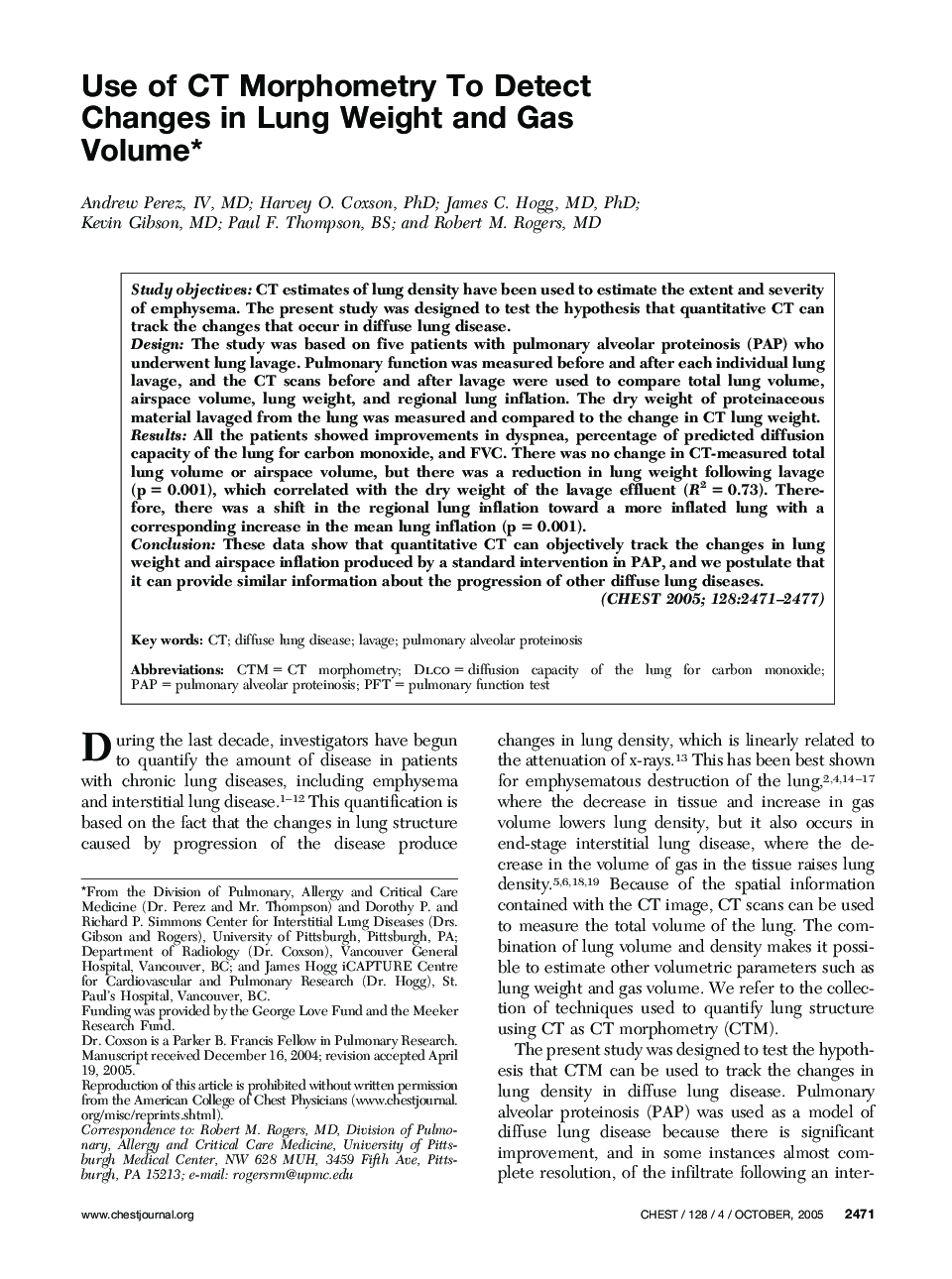| Article ID | Journal | Published Year | Pages | File Type |
|---|---|---|---|---|
| 2907137 | Chest | 2005 | 7 Pages |
Study objectivesCT estimates of lung density have been used to estimate the extent and severity of emphysema. The present study was designed to test the hypothesis that quantitative CT can track the changes that occur in diffuse lung disease.DesignThe study was based on five patients with pulmonary alveolar proteinosis (PAP) who underwent lung lavage. Pulmonary function was measured before and after each individual lung lavage, and the CT scans before and after lavage were used to compare total lung volume, airspace volume, lung weight, and regional lung inflation. The dry weight of proteinaceous material lavaged from the lung was measured and compared to the change in CT lung weight.ResultsAll the patients showed improvements in dyspnea, percentage of predicted diffusion capacity of the lung for carbon monoxide, and FVC. There was no change in CT-measured total lung volume or airspace volume, but there was a reduction in lung weight following lavage (p = 0.001), which correlated with the dry weight of the lavage effluent (R2 = 0.73). Therefore, there was a shift in the regional lung inflation toward a more inflated lung with a corresponding increase in the mean lung inflation (p = 0.001).ConclusionThese data show that quantitative CT can objectively track the changes in lung weight and airspace inflation produced by a standard intervention in PAP, and we postulate that it can provide similar information about the progression of other diffuse lung diseases.
